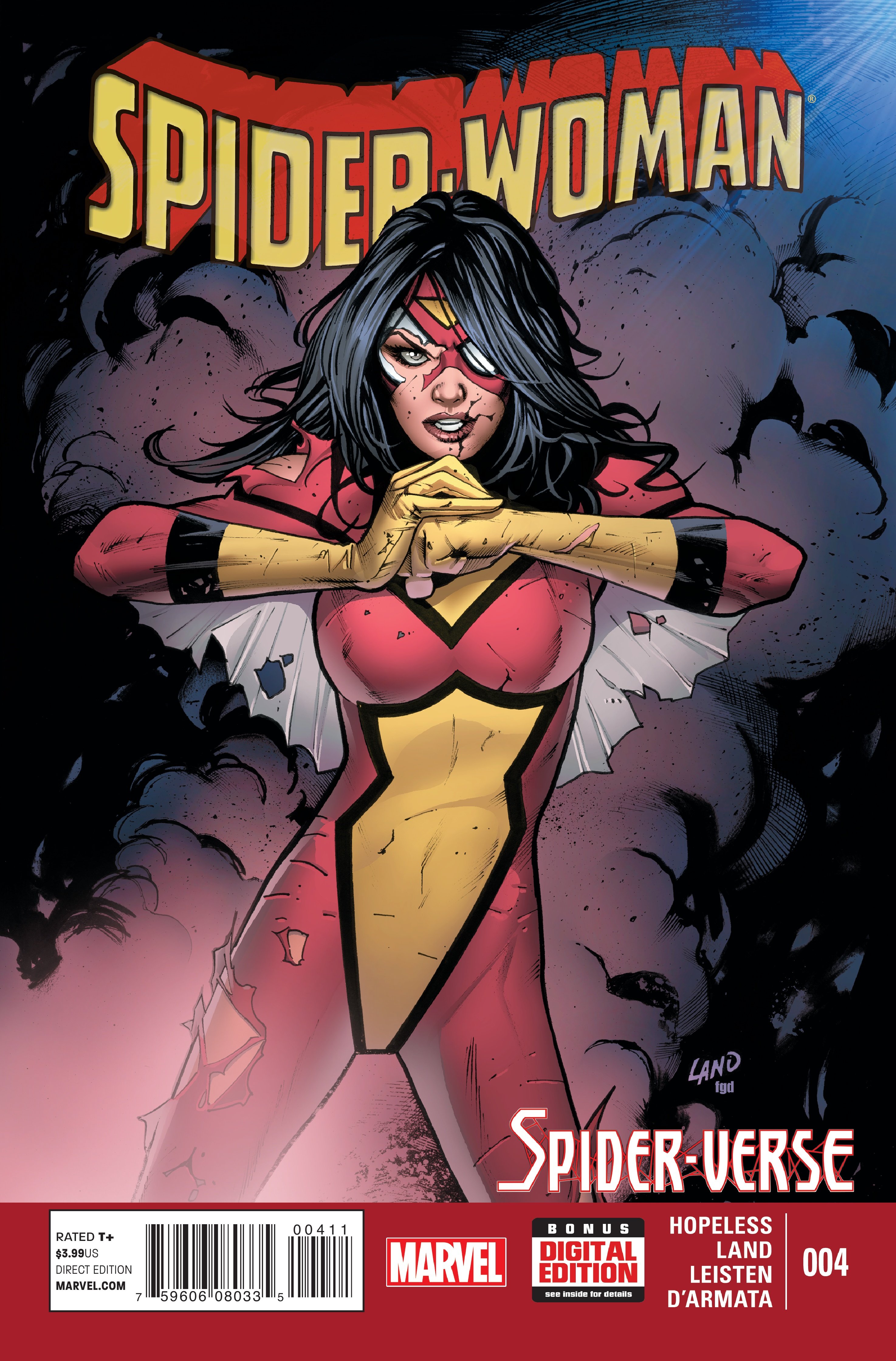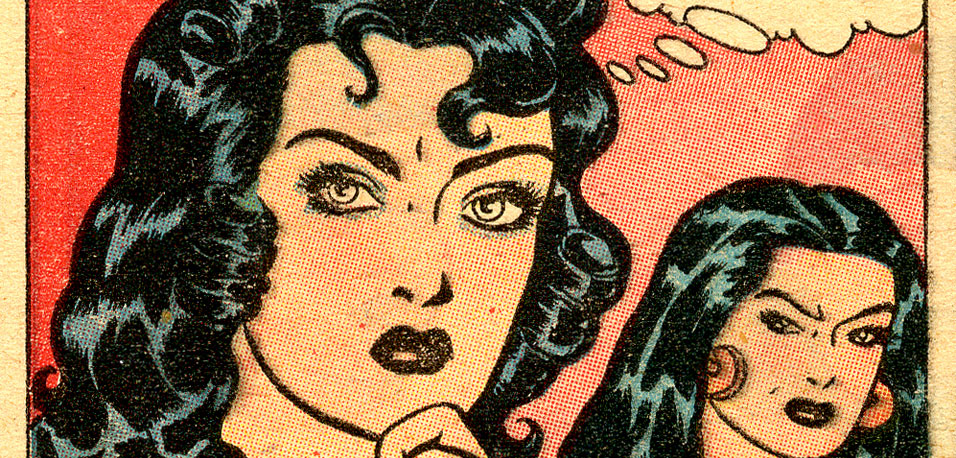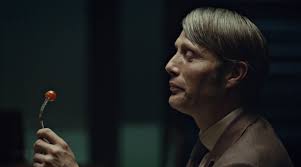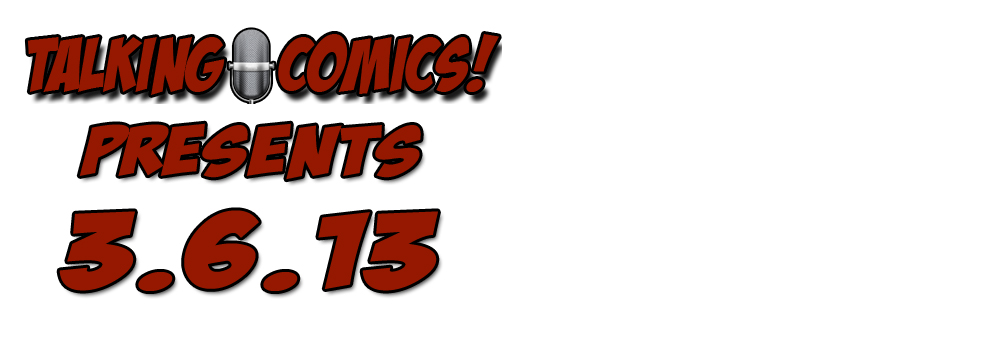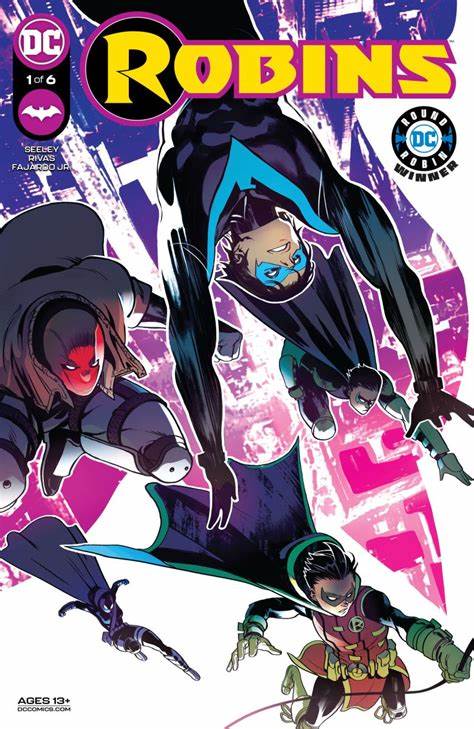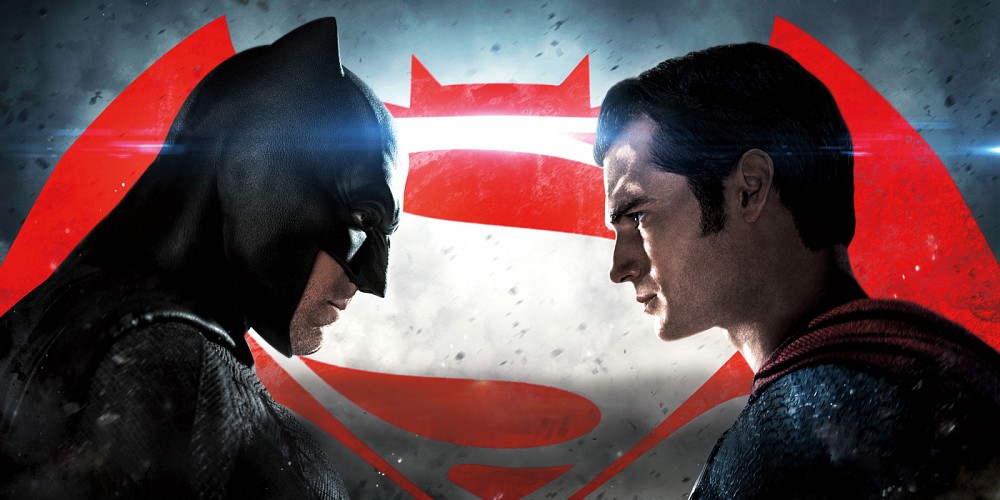1971 was a historic year for comic books. Historic in the fact that after an already legendary run at Marvel comics Jack Kirby moved to DC comics. There are many stories as to why Kirby made the switch but they all tend to center around creators rights and he was given more freedom at DC, freedom and recognition. Anyone who knows the history of comics understands the importance Jack Kirby plays in the history of the medium. His output was prolific and his imagination was a fount of the unbelievable. Comics today would not be what they are if it were not for Jack Kirby and since 1971 DC has mined Jack Kirby’s creations almost as heavily as Marvel. For it was in 1971 that Kirby gave DC one of their most interesting, fantastic, and lasting concepts. He gave them the Fourth World.

Not only was Jack Kirby an incredible creator he also was a realist when it came to comic books and their future. As Kirby saw it the future of comics was going to be in the collection of comic books, larger tomes of stories that could reach the reading audience not only through the emerging direct market but also the local bookstore and libraries. Therefore Kirby created a meta-series designed to be finite for later collection. Thus was born the Fourth World. A tale of the New Gods, a struggle between good and evil, and one of the highest concept series of comic books ever created.
Jack Kirby’s the Fourth World was born as a continuation to what Kirby had been doing on the Mighty Thor while at Marvel. DC’s Fourth World begins after Ragnarok, the final battle and death of the Old Gods. When we first witness Ragnarok it is implied, by words and pictures that the Old Gods dying in the final battle are the Norse Gods, and to astute readers at the time bore witness to what Kirby planned for the Mighty Thor. I do not doubt there was also subtext with Kirby destroying his old creation so that his new creation could be born.

At its core the Fourth World is a tale of Good vs. Evil. The New Gods, born from Ragnarok, inhabit the twin worlds of New Genesis and Apokolips that is in a parallel universe that is accessible to the DC Universe through a teleportation device known as a Boom Tube. Once they were the same world but splintered with Ragnarok and New Genesis become home to the peaceful, altruistic New Gods while Apokolips became the home to evil incarnate and despotic rule. When the Fourth World Meta series opens a wary peace exists between the two worlds due to a pact made by the leaders of the worlds, Highfather of New Genesis and Darkseid of Apokolips. The pact required the leaders swap sons to be raised by the other and by having their children on the other planet they are less likely to go to war. These two sons become two of the principal protagonists throughout the entirety of the Fourth World and beyond, Highfather’s son Scott Free AKA Mister Miracle and Darkseid’s son Orion.
Each New God is born with a power of some sort, gifted to them by the reservoir of energy known as the Source. The fossilized remains of the Old Gods known as the Source Wall then guard the Source. Each New God is then gifted with a Mother Box, a device that allows access to Boom Tube abilities as well as a source of information and guidance. The concept of the Mother Box has evolved and changed over time but plays an important role in the history of the New God and is crucial in the current DC Universe as well as becoming important in the DC Cinematic Universe.
The original Fourth World meta-series plays out over four series, The New Gods, the Forever People, Mister Miracle (a series and character I will delve into in its own piece in the near future), and of all places Superman’s Pal Jimmy Olsen. Many of the early references and concepts of what would become the Fourth World begin in Superman’s Pal Jimmy Olsen but the book never felt or feels interconnected with the rest of the Fourth World books of the time. Kirby wrote and drew Superman’s Pal Jimmy Olsen #133-148. Well drew most of it since even the great Jack Kirby wasn’t allowed to draw Superman’s face and his Jimmy Olsen had to be retouched as well since DC wanted a house style look when it came to the Superman characters due to licensing concerns. I have a hard time fathoming this, that DC would replace Kirby pencils but it was done throughout the Fourth World books. Whenever Superman appears Kirby would draw the original pages then the faces would be changed to reflect what Superman looked like in his core books. Kirby decided to take Superman’s Pal Jimmy Olsen since it was in his contract he had to take on an existing DC title and Superman’s Pal Jimmy Olsen did not have a set creative team at the time so he would not be displacing anyone if he took it over.

Kirby went about changing the status quo from the get go. Out were the tried and true tales of Jimmy being turned into some mutant animal and Superman swooping in to save the day. Now Jimmy Olsen was teamed with a new Newsboy Legion (son’s of the original Newsboy Legion created by Kirby and Joe Simon in the ‘40s) as well as the Guardian and the Cadmus Project. Superman’s Pal Jimmy Olsen under Kirby was trippy and psychedelic. Kirby experimented with the art, using photography interlaced with his pencils and threw one big concept at the reader after another. It very well could be Kirby at his best as he took a book that was formulaic and on the brink of cancellation and turned it into a must read book. Kirby threw in motorcycle gangs, cults, and scientific experiments gone wrong. There was also the absurd, probably the most notable of which was the two-part guest appearance by comedian Don Rickles and his counterpart Goody. It’s a hard two-part read and does not mesh well with the rest of the series. The Fourth World and the major New Gods are not present in the Jimmy Olsen stories and the book never felt directly connected to the rest of the tale. Issue #135 hints at the New Gods with the Evil Factory run by two of Darkseid’s minions, Simyan and Mokkari but other then that there isn’t much present in the Superman’s Pal Jimmy Olsen stories that is needed to understand the Fourth World but the books are fun and always included with any grand Fourth World collection.

The real kickoff to the Fourth World happens in New Gods #1, which introduces much of the cannon of the meta-series. I wasn’t born yet when the New Gods #1 was released but I remember the first time I saw the issue. It was a wall book at the first comic shop I ever got to go to. I didn’t know Kirby, I bought anything by Byrne, The New Teen Titans was a must read, and nothing was better then Claremont’s the Uncanny X-men. Yet that cover captured me. It’s a simple cover with Orion, on his Astro-Harness flying toward the reader with the vastness of space behind him. It’s simplistic but beautiful and I wanted it. I still want it, at least a copy of the first issue but I have never been able to justify the price. It would be years before I read the entirety of the Fourth World but I always remembered that cover. Kirby is always revered for his larger then life illustrations and his high concept designs but it’s the simplicity of the New Gods #1 that entranced me. It doesn’t need anything else, that illustration of Orion set my mind in motion and it never left me and it’s still one of my all time favorite covers. It’s probably a good thing I didn’t read the New Gods when I first saw this issue. I was ten and I highly doubt I would have understood it. As my reading list expanded, comics and literature, over the next few years I would have taken to it but it wasn’t available. I read issues here and there, more Mister Miracle then New Gods, but it wasn’t until was in my 30’s that I finally read it all in the order it was printed and fell in love with the tale.
The New Gods is where Kirby laid out his grand plan. It begins as an epilogue, a tale set after Ragnarok and our principle protagonist is Orion, second son of Darkseid, but raised by Highfather he stands in defense of his biological fathers desire to obtain the Anti-Life Equation and control all life across the universe. The book may focus on Orion but we’re also introduced to a large pantheon of New Gods including Highfather, the keeper of all knowledge Metron, and Orion’s best friend and polar opposite Lightray. Yet Orion is our focus and he lives up to his namesake, as he is a god of war. He wields the Astro-Force, which he then uses along with his Astro-Harness. Over the course of the first issue Orion learns of his biological father’s plot to discover the Anti-Life Equation, a mathematical formula that allows the one who discovers it the ability to control all sentient life in the universe. If he is able to discover the equation Darkseid will be able to rule the universe to his will. Orion cannot let this happen and when he discovers the equation is located on Earth he travels there to defend it. Over the course of the New Gods #1-11 we see Orion establish himself on Earth, gain a group of human allies, and combat the minions of Darkseid all across the planet and Universe. The New Gods is fertile with so many ideas and concepts that it is a joy to read. It felt like there was very little editorial oversight with the New Gods, unlike Superman’s Pal Jimmy Olsen, that Kirby was allowed to do what he wanted as long as he turned the book in on time.

Released along with the New Gods came the Forever People, a story of five young New Gods who find themselves traveling Earth in their Super Cycle as they to try and thwart Darkseid all across the world. The Forever People was very much a take on the flower children or hippie culture of the late ‘60s and early ‘70s. The Forever People were Beautiful Dreamer, a New God capable of creating Illusions. Big Bear, who was super strong, which is saying a lot when compared to the rest of the New Gods. Mark Moonrider who possessed super reflexes and a keen mind. Serifan, the youngest of the Forever People who was a telepath and could use cosmic cartridges in his cowboy style six shooters. Rounding out the Forever People was Vykin, who wielded magnetic powers and has the distinction of being the first African American DC hero. Unlike other New Gods, who possessed individual Mother Boxes the Forever People shared one, which helped guide them in their travels and also helped them summon the Infinity Man in times of need. The Infinity Man was a New God, Drax the Brother of Darkseid to be specific, who controlled the Omega Force, which granted him multiple powers and put him on par with Superman. When not needed the Infinity Man would exist in a Limbo Space until called forth again.

The Forever People pushed the concept of the New Gods and the Fourth World further. We were introduced to even more New Gods, such as Glorious Godfrey who with his powers of manipulation would be right at home in FOX News primetime lineup and the craven Desaad, Darkseid’s master torturer. We also meet Sonny Sumo, an underground sumo fighter who actually posses a part of the Anti-Life equation which he can use to harness his chi and heal himself from injuries. Unfortunately the Fourth World titles did not perform as expected and there were several mandates put upon The Forever People, one of them being the inclusion of Deadman, a character that Kirby never really liked nor did he want to include but Kirby was a good soldier and followed the directive. The Forever People lasted for eleven issues and was canceled along with the New Gods. Due to the cancellation the Forever People ends on a cliffhanger as the young New Gods are stranded on an alien planet and will remain there for years to come and when they are finally revived it is not pretty.

Jack Kirby returned to Marvel in 1975 with an uncompleted Fourth World. DC repackaged the series a few years later, reprinting the original series with a new ending then continued with issues #12-19, coined Return of the New Gods by the great Gerry Conway and Don Newton but it doesn’t feel like Kirby’s Fourth World. The characters are redesigned, most notably Orion who looses his Astro-Harness and dons a more traditional super hero suit. The title didn’t last long and the plot threads are wrapped up in Adventure Comics #459-460 with the death of Darkseid. Conway and George Perez then bring the New Gods back in the Justice League of America #183-185, dubbed Crisis on New Genesis, and is a great piece of comic work but still not Kirby.

The Fourth World as a whole returned at the tale end of the Super Friends cartoon and in the Super Powers line of toys that were quite popular in the early ‘80s. So much so that DC decided to bring Kirby back to conclude his story, which he did in 1984’s DC Graphic Novel #4: the Hunger Dogs. It’s an aged Kirby, who unfortunately had lost a step and when read with the entirety of the story it does not flow but still a must read.
Since then the Fourth World’s cast of characters has been ever present in the DCU. Darkseid is a common protagonist, especially when you need a big bad guy. Jim Starlin and Mike Mignola revived the franchise with 1988’s Cosmic Odyssey, which launched a third volume of the New Gods that ran for 28 issues. It also spawned a Forever People mini-series that is forgettable. It retconned the Forever People as earthling babies who were going to die so they were brought to New Genesis to be saved. This has since been retconned again. Probably the best ‘modern take’ on the Fourth World comes from John Byrne’s New Gods and Jack Kirby’s the Fourth World titles where he is faithful to Kirby’s original concept. Walter Simonson wrote and drew a solo Orion series that is a lot of fun as well as faithful. Grant Morrison and Jim Starlin took it upon themselves to end the Fourth World in the Death of the New Gods mini-series, which bled into the Final Crisis, where the death of the New Gods is central to the story. The New 52 saw a return, as Orion appeared in Wonder Woman, the entirety of the Fourth World appeared in the Green Lantern crossover Godhead and then again in Geoff Johns Justice League tale the Darkseid War.

Some of these stories are fun while others are forgettable but none of them have the imagination and fun of Jack Kirby’s original Fourth World tales, which you can find in four lovely collections or this fall in a Fourth World omnibus since the DC is again mining the Kirby concept as their Justice League film will expand the Fourth World concepts hinted at in Batman vs. Superman with Mother Boxes, Parademons, and the main villain being Darkseid’s uncle Steppenwolf. I have no doubt if successful the DC Cinematic Universe will build to a conflict with Darkseid himself in the near future. I am Hopeful they will be faithful to Jack Kirby’s work since the man is known as the King for a reason and we as comic readers are spoiled by his body of work and The Fourth World is Kirby at his best and should be enjoyed by all.


